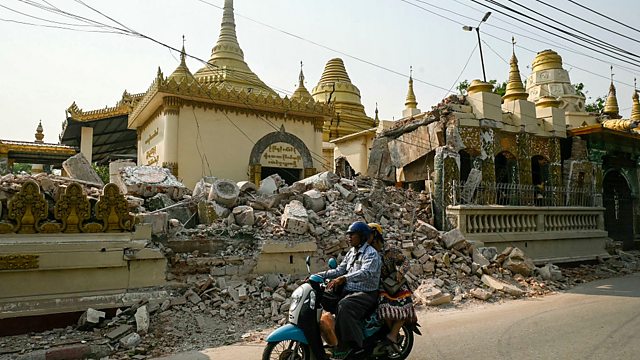Earthquakes and the first breath of life on Earth
How Myanmar’s tragic earthquake left a 500km scar in just 90 seconds. Also, earth’s first oxygen breathers seem to have evolved way before there was enough oxygen to breath.
How Myanmar’s tragic earthquake left a 500km scar on the surface of the earth in just 90 seconds. Also, more hints of a link between shingles vaccines and reduced dementia, and how earth’s first oxygen breathers seem to have evolved way before there was enough oxygen to breath.
Judith Hubbard is a seismologist and earthquake analyst who has been gleaning what scientific information we can find on the tragic quake that struck Myanmar last week.
There seems to be some sort of link between the herpes virus that causes shingles and some people’s risk of Alzheimer’s dementia. At least, the latest paper appears to confirm so, according to an analysis published in Nature this week. Pascal Geldsetzer of Stanford University and colleagues have looked at data from public health records in NHS Wales in the UK, and have retrospectively performed a “natural experiment”, finding a clear suggestion that a vaccine against the virus that causes shingles seems to confer a lower likelihood of developing dementia over the subsequent seven years. Quite why this happens remains moot.
And a long time ago, and for a long time, life on earth was nought but bacteria. The atmosphere was also nearly devoid of oxygen. These ancient bacteria leave scant fossil records, whilst the rocks show a clear time – known as the Great Oxidation Event – when earth’s atmosphere transformed to something more like the oxygen rich air we breath now. A pervading chicken-and-egg question asks whether the atmosphere changed and life adapted, or did life somehow evolve and transform the atmosphere? A team publishing in Science this week have performed an innovative analysis of bacterial genomes that suggests that the ability to use oxygen in respiration evolved some 900 million years before the atmosphere transformed. The question still stands, but as the team explain, the new analysis provides at least a clear timeline for why we breath the way we do today.
Presenter: Roland Pease
Producer: Alex Mansfield
Production Coordinator: Josie Hardy
(Image: People ride a scooter past the rubble of damaged Buddhist pagoda in Mandalay on April 3, 2025. Credit: Sai Aung MAIN / AFP via Getty Images)
Last on
More episodes
Featured
-
.
Broadcasts
- Last Thursday 19:32GMT���˿��� World Service
- Last Thursday 22:32GMT���˿��� World Service Europe and the Middle East
- Friday 04:32GMT���˿��� World Service Australasia, Americas and the Caribbean, South Asia & East Asia only
- Friday 08:32GMT���˿��� World Service
- Friday 12:32GMT���˿��� World Service
- Saturday 01:32GMT���˿��� World Service News Internet & East Asia only
- Sunday 23:32GMT���˿��� World Service except East Asia, Europe and the Middle East, News Internet & South Asia
- Monday 00:32GMT���˿��� World Service Europe and the Middle East
Podcast
-
![]()
Science In Action
The ���˿��� brings you all the week's science news.


